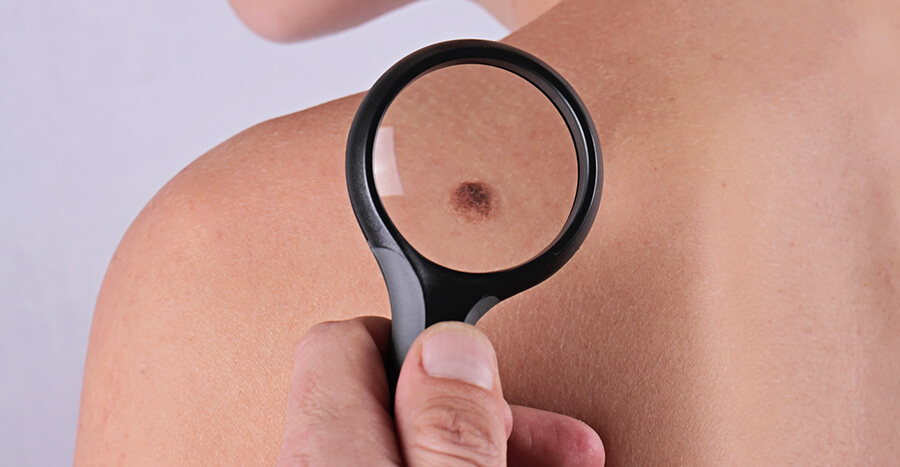There are three primary types of skin cancer: basal cell carcinoma, squamous cell carcinoma, and malignant melanoma. Skin cancer most commonly occurs on sun-exposed areas of the body but may also develop in areas that rarely see UV rays. Skin cancer typically takes the form of a lump, bump, nodule, a sore that won’t heal, an unevenly shaped mole, or a discolored patch of skin. It is often painless, but some lesions may hurt or itch.
Here are three types of skin cancer to look out for:
Basal Cell Carcinoma
Basal cell carcinoma occurs primarily in areas that are exposed to a lot of sun, such as the face and neck, but can appear elsewhere. It may look like:
- A flat, firm, flesh-colored or yellow scar-like lesion
- A pearly or waxy growth
- Itchy, raised reddish patches
- Growths with raised edges and a lower area in the center
- Open, non-healing sores
Squamous Cell Carcinomas
Squamous cell carcinomas commonly appear on the face, ears, and hands, but may also appear on the genitals. In people with darker complexions, they may appear in areas that do not see a lot of sun. They may look like:
- A red nodule
- A sore that won’t heal
- Oozing or crusted lesions
- Wart-like growths
- Rough, red scaly patches
Malignant Melanoma
Most moles and brown spots on the skin are harmless, but malignant melanoma is the most deadly form of skin cancer. Melanomas most commonly occur on sun-exposed areas of skin but they can also appear in nail beds, the palms of the hand, the soles of the feet, the whites of the eyes, and in other areas.
The ABCDE rule can be used to identify suspicious lesions. This acronym stands for Asymmetrical, Border, Color, Diameter, and Evolving. Melanoma typically looks like:
- Asymmetrical: It is unevenly shaped, and/or one half of the mole does not match the other.
- Border: The edges are irregular, blurry, or uneven.
- Color: The color is not the same all over. The mole may be mottled or have different shades of brown and black, and sometimes pink, red, white, or blue.
- Diameter: It is wider than a pencil eraser.
- Evolving: It is changing appearance, including color, shape, or size.
Any unusual, new, or changing bump, nodule, non-healing sore, or discolored patch of skin, should be shown to a medical provider as soon as possible. If you have any concerns, call or visit us here at the office of Ingrid E. Trenkle MD, located in Redlands, CA and Sun City, CA.



